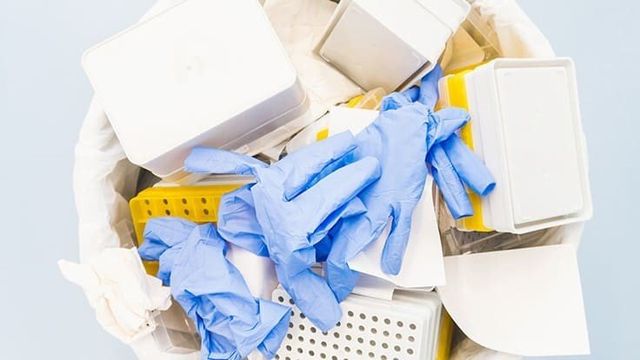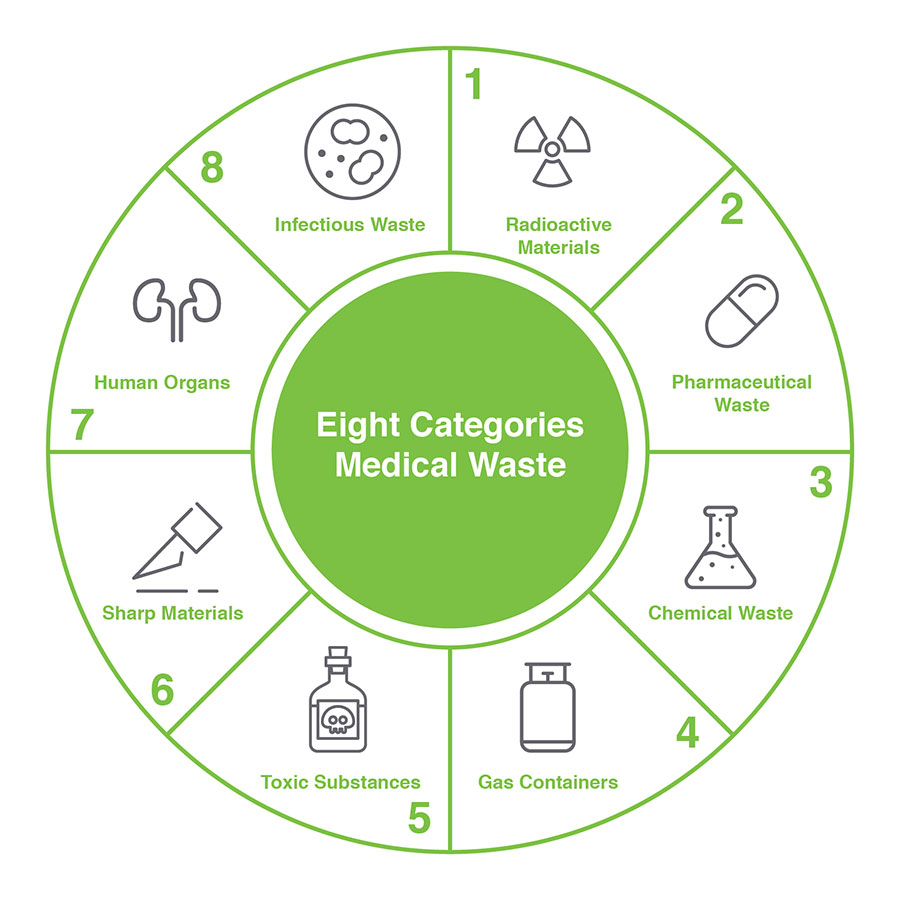Medical Waste Removal Excellence: Elevating Safety And Security Specifications in Your Facility
Stay Ahead of Laws: Specialist Advice on Medical Garbage Disposal
In a world where the health care market is frequently evolving, it is imperative for clinical centers to remain in advance of regulations when it comes to the correct disposal of clinical waste. With stringent guidelines and frequent regulatory changes, it can be testing to browse the intricacies of this procedure. With skilled recommendations, centers can make sure compliance and mitigate risks associated with improper waste disposal. From understanding the different groups of clinical waste to implementing the right collection and partition approaches, this conversation will certainly give beneficial understandings and workable suggestions to aid centers remain ahead of policies in the ever-changing landscape of medical garbage disposal.
Recognizing Clinical Waste Categories
Comprehending clinical waste classifications is crucial for correct disposal and management in health care facilities. Clinical waste refers to any type of waste generated by health care tasks that may present a hazard to public health and wellness or the atmosphere. It is crucial to categorize medical waste accurately to ensure its risk-free handling, transport, therapy, and disposal.
There are several classifications of clinical waste that healthcare centers need to be acquainted with. The most usual categories include infectious waste, pathological waste, sharps waste, pharmaceutical waste, and chemical waste. Each classification has specific guidelines and policies for its appropriate monitoring and disposal.
Pathological waste refers to human cells, body organs, or body components that call for unique handling and disposal. Pharmaceutical waste comprises ended, extra, or polluted medications that need careful handling and disposal.
Staying Up-To-Date With Regulatory Adjustments
Remaining current with governing adjustments is essential for health care facilities to make sure compliance and correct management of medical garbage disposal. medical waste removal services. With guidelines regularly progressing, it is vital for healthcare centers to stay current to stay clear of charges, penalties, and prospective harm to the environment and public health
To remain ahead of governing modifications, healthcare facilities should develop a system for tracking and monitoring updates. This can be done by registering for regulative newsletters, attending workshops and seminars, and proactively joining industry associations. In addition, facilities need to assign a team member or group accountable for remaining informed and sharing info to relevant stakeholders.
Regular interaction with governing companies is also crucial. Healthcare facilities ought to establish relationships with regional, state, and government agencies to guarantee they understand any kind of modifications in regulations that may affect their waste monitoring practices. This can be done through routine meetings, engagement in public remark periods, and proactive involvement with regulatory companies.
Furthermore, health care facilities must think about partnering with waste management business that specialize in clinical waste disposal (medical waste disposal services with WasteX). These companies are usually well-versed in the most current regulations and can offer support and assistance to ensure compliance
Implementing Appropriate Collection and Partition Techniques
To properly manage medical waste disposal, health care centers have to develop correct collection and partition approaches based on regulatory guidelines. Executing these methods guarantees the safe handling and disposal of potentially dangerous materials, safeguards the environment, and minimizes the risk of injuries and infections to health care employees and the basic public.
Appropriate collection and segregation methods involve the use of designated containers and labeling systems. Healthcare centers must supply clearly classified containers for various sorts of medical waste, such as sharps, infectious waste, pharmaceutical waste, and non-hazardous waste. These containers must be color-coded and plainly significant to prevent complication and promote very easy recognition.
Additionally, healthcare facilities need to educate their personnel on the correct treatments for gathering and segregating clinical waste. This includes enlightening them on the various types of waste, the ideal containers to utilize, and the value of following regulations and standards. Routine training sessions and refresher programs should be performed to make certain that employee remain current on finest techniques.
Moreover, healthcare centers ought to develop a system for regular collection and disposal of clinical waste. This might include partnering with certified waste management business that specialize in medical garbage disposal. These business will make certain that the gathered waste is carried and dealt with in conformity with regulatory demands.
Picking the Right Disposal Techniques

Incineration is among one of the most usual and reliable methods for taking care of certain sorts of clinical waste, such as pathological waste and sharps. It involves the regulated combustion of waste at heats, minimizing it to ash. Nonetheless, incineration can launch harmful pollutants right into the air and add to air pollution.

Other disposal methods consist of chemical treatment, microwave treatment, and landfilling. Chemical therapy includes using chemicals to sanitize and neutralize the waste. Microwave treatment utilizes microwave energy to warm and disinfect the waste. Landfilling includes hiding the waste in an assigned landfill location (medical waste disposal services with WasteX). you could look here Landfilling needs to be the last hotel due to the possible threat of contamination to soil and groundwater.
Making Sure Conformity With Paperwork and Training
After very carefully considering the appropriate disposal methods for medical waste, medical care centers have to make certain conformity with guidelines and lessen ecological influence by carrying out efficient paperwork and training procedures. This step is essential in keeping a sustainable and secure setting for both medical care employees and the public.

Training is equally vital in ensuring compliance with regulations. Healthcare employees that deal with clinical waste must receive suitable training on waste partition, managing, and disposal procedures. This training ought to cover topics check these guys out such as the appropriate use personal protective devices, identification of different types of waste, and the appropriate disposal approaches for each waste classification. By providing detailed training, healthcare facilities can encourage their personnel to make informed decisions and minimize the threat of inappropriate garbage disposal.
Conclusion
To conclude, staying ahead of regulations in clinical waste disposal is critical for medical care facilities. medical waste removal near me. Understanding the various classifications of clinical waste, remaining updated with regulatory changes, executing appropriate collection and partition approaches, choosing the proper disposal approaches, and making sure conformity through documents and training are all necessary steps. By following these guidelines, healthcare organizations can successfully take care of and get rid of of medical waste in a risk-free and accountable fashion
From comprehending the different classifications of medical waste to executing the right collection and partition approaches, this discussion will give beneficial understandings and workable tips to aid centers stay in advance of regulations in the ever-changing landscape of clinical waste disposal. - medical waste disposal services with WasteX
The most usual categories consist of contagious waste, pathological waste, sharps waste, pharmaceutical waste, and chemical waste. Medical care facilities need to offer clearly identified containers for different types of medical waste, such as sharps, infectious waste, pharmaceutical waste, and non-hazardous waste. Health care centers ought to establish an extensive system to tape-record and track view all facets of medical waste disposal, consisting of kinds of waste generated, quantities, and disposal techniques made use of. Medical care employees who take care of medical waste needs to receive proper training on waste partition, handling, and disposal procedures.